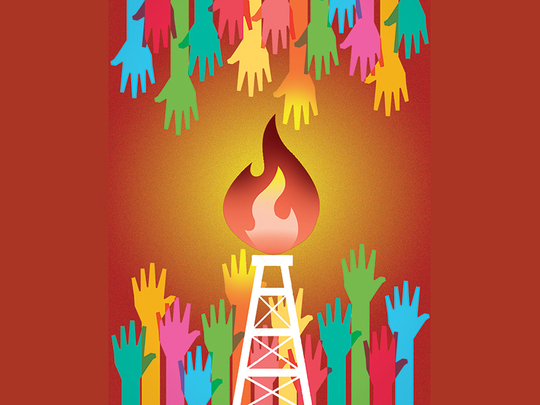
Diversity, in particular ethnicity and gender diversity, are increasingly on the radar of international energy companies operating in this region.
Although these types of issues were unlikely to be key topics for leading NOCs (national oil companies) and IOCs (independent oil companies) who gathered from around the world at the world’s biggest oil event — the Abu Dhabi International Petroleum Exhibition & Conference (Adipec) — the UAE energy sector will definitely pay closer attention to diversity going forward.
As the energy industry continues to face unprecedented pressure, inflicted by constant fluctuations in the price of oil, could diversity be the difference between winning and losing business opportunities and surviving difficult market conditions? The business case for diversity is certainly clear: a diverse organisation reflects its customer base, and gives companies a competitive advantage over less savvy rivals, as they can access a wider talent pool.
As a result, those companies are better placed to stimulate innovation and to recognise and capitalise on future opportunities.
A properly diversified and Emirati-led workforce can help local energy companies grow their business, especially in a challenging economic environment. This is because a diverse workforce brings together a wide variety of skill sets, experience and cultural backgrounds to enable companies to fully penetrate and take advantage of business opportunities within the local, regional and international markets.
Committed and focused
A workforce which has a healthy population of Emirati nationals is one which tends to be more stable, less transient and which ensures the workforce is committed and focused on the long term success of the business operations within the Middle East.
What’s more, as a key element of the UAE economy, it is essential UAE nationals are involved in its success and have the skill set to support its development and growth in the future. There are major socioeconomic advantages to developing the nationalisation of the workface within the oil and gas sector and more generally within the private sector.
For example, Emirati and GCC nationals naturally have a much better understanding of the local business environment and are often better placed to establish connections with local business authorities, which is crucial to businesses seeking to grow in the Middle East energy sector.
According to international recruitment organisation Hays’ annual oil and gas salary survey, the expatriate workforce in the UAE declined by 9 per cent this year compared with 2015. This reduction in the workforce, coupled with an increasing focus on nationalisation policies, has ensured that prioritising diversity becomes a key focus within the oil and gas sector.
As markets evolve in the region, perhaps spurred on by the challenges facing the oil and gas industry in particular and the expansion of other energy markets, there is likely to be greater involvement of GCC nationals in the energy sector. This is happening throughout the region, particularly in view of the increasing number of well-qualified new Emirati graduates entering the job market each year, which is likely to be one of the most significant changes in the region’s employment market in the near future.
For example, the National Drilling Company of Abu Dhabi recently established a special training programme in the field of drilling oil and gas well and related services. In May 2016, 89 UAE nationals graduated from this training programme, which is understood to be the first of its kind in the region.
Female workforce
Diversity in the energy sector is not limited to diversity of nationality. Women today comprise a larger percentage of the industry’s global workforce than at any other point in time. This represents a talented female workforce that the energy sector can — and indeed should — seek to recruit and develop.
However, the global energy sector has long been acknowledged as a traditionally male-dominated industry with typically less than 10 per cent of female employees across the sector, according to Duncan Freer. Accordingly, given this does not reflect the talent pool from which the future workforce is to be drawn, there are likely to be negative implications for companies in the sector who fail to take the opportunity to actively seek to attract greater numbers of women into engineering and managerial positions.
Some leading energy employers have recognised the potential competitive advantage recruiting women might offer them and are tapping into this talent base. For example, women represented nearly 32 per cent of BP’s hires in 2013. Research by McKinsey in 2015 into why diversity matters revealed gender-diverse companies are 15 per cent more likely to outperform those who are not, while ethnically diverse companies are 35 per cent more likely to outperform.
The Middle East energy sector needs to accelerate efforts to attract female employees if it is to meet the challenges that lie ahead. Initiatives such as the establishment of the UAE Gender Balance Council show the UAE is serious about this issue.
A diverse workforce is increasingly recognised as a key factor in establishing a competitive advantage in the energy sector. The focus on innovation and finding new ways of growth has never been more prevalent. So, placing diversity and Emiratisation at the centre of any workplace strategy ensures energy companies can engage with a wide and global client base.
This could be the key to energy companies’ long-term business success.
The writer is Senior Associate at Pinsent Masons.












